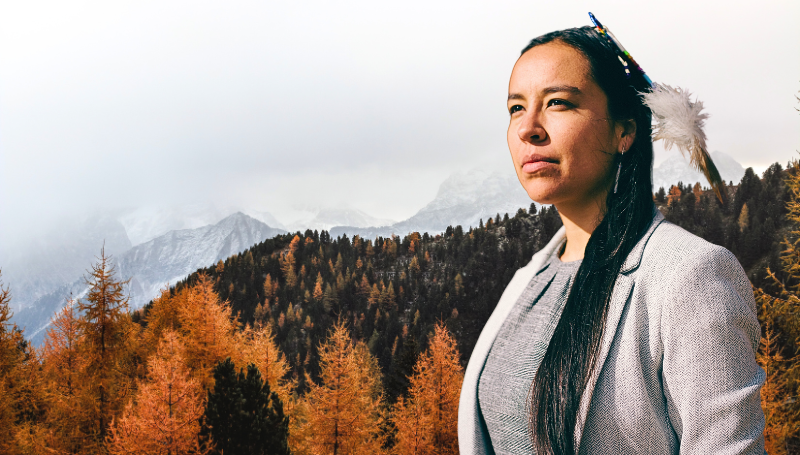How humans regenerate earth
(Sustainable Human | Lyla June) How can we transform our role from Earth’s conquerors to its healers, reigniting the ancient wisdom that regenerate the Earth?
How humans regenerate earth
Imagine a world where deserts bloom into lush gardens at the touch of human hands. What if our presence on Earth could spark life, not diminish it? Dive into a journey of ancient wisdom where native people didn’t just inhabit the land, they enriched it, turning barren grounds into thriving ecosystems. Uncover the secrets of a time when humanity and nature worked in unison, creating abundance for all life forms. Are we ready to rekindle this harmonious bond and witness the Earth flourish once again?
Transcript video
What if I told you that we belong here? What if I told you that the Earth needs us? What if I told you I’ve seen my people turn deserts into gardens.
For tens of thousands of years, native people of this land constructed beautiful gardens all around them. We were active agents in shaping the land to produce prolific abundance. We expanded and designed grasslands and forests for the benefit of all life. We became what the world calls a keystone species, or a species upon which entire ecosystems depend. And our cultures became keystone cultures, refined over time.
Now, much was made about the positive environmental effect of the pandemic. As more people stayed home, pollution levels dropped, animals began to reclaim habitat, and the logical leap that many observers seemed to make was that the Earth would be better off without humans. I reject that leap. The Earth may be better off without certain systems we have created. But we are not those systems. We don’t have to be at least. What if these human hands and mines could be such a great gift to the earth that they sparked new life wherever people and purpose met?
Indigenous land management techniques
I’d like to share important indigenous land management techniques in hopes that they might inform and inspire us today. The first is to tap into and align ourselves with the forces of nature. Why try to control the earth when you can work with her? In southwest deserts, native farmers have leveraged the pre existing topography of the land. They placed their fields at the base of watersheds to catch every drop of the monsoon rains and the nutrients that flow down with them carried down from upland soils. This alluvial farming technique requires no outside fertilizers or irrigation because all of this comes with the rain.
Intentional habitat expansion
Another fascinating land management technique is intentional habitat expansion. Why put plants and animals into farms and cages when you can simply make a home for them and they come to you? Indigenous peoples have intentionally augmented grasslands for Buffalo. By bringing gentle fire to the Great Plains, we would transform dead plant tissues into nutrient dense ash, nourishing the soil and unlocking the seeds of pyro-adapted grasses and medicines like echinacea. Over time, this fire would prevent trees and shrubs from taking over the grasslands and would nourish the soil to generate top soils up to four feet deep. Many people think that we followed the buffalo when in fact the buffalo followed our fire.
Nonhuman-centric systems
A third strategy is to create nonhuman-centric systems. Why hoard for your own species where you can live to serve all life around you? Coastal nations of British Columbia enhance fish habitat by planting kelp forests where the herring lay their eggs. This helps that small silver fish lay even more eggs, and both the eggs and the hatched herring fish cascade up the food chain, nourishing so many other life forms such as bear, salmon, orca, eagles, wolves and more. By seeding this food web and feeding all life around them, coastal nations have greater food security for themselves, because they feed the hand that feeds them.
Food and land management
These are the types of food and land management systems that Europeans came across as they spread westward. They often mislabeled them as terra nullius, or virgin land, or wilderness, instead of what they really were: living heirlooms, thousands of years in the making. I would venture to say that these systems are even more efficient than industrial food systems because they protect and augment the very things that give us life, instead of extracting and destroying them.
Sometimes I wonder what the world would look like if we applied these strategies to today – if we protected life, expanded life. I guarantee you if we did, we’d no longer see humans as a bane to the earth or something she’d be better off without. We’d see humans as a critical piece of the ecological puzzle.
Healing the soil
In addition to healing the soil, we must also heal our history. And we can do that together. So much of these continents were conquered and stolen from a people who often never wanted to fight in the first place. Countless native people were displaced from their homelands, their children put into boarding schools where our languages and cultures were prohibited and destroyed. This legacy will not be healed by simply appropriating and mimicking native knowledge. We must also work to restore at least some of the stolen places to Native people, who often live like refugees today, aching to return to their sacred homelands.
When we understand that humanity is an expression of the Earth’s beauty, we understand that we too belong. When we become her friend, her confidant, her ally, her partner in life, instead of her dominator, her superior, or her profiteer, we can transform dead systems to living ones. And this does not involve isolating national parks and never touching a blade of grass. No, it involves rolling up our sleeves, living within her processes, becoming a part of the Earth’s system as we were born to be, and using these mines to protect and augment life on a holistic regional scale.
About the speaker
Dr. Lyla June Johnston (aka Lyla June) is an Indigenous musician, scholar, and community organizer of Diné (Navajo), Tsétsêhéstâhese (Cheyenne) and European lineages. Her messages focus on Indigenous rights, supporting youth, traditional land stewardship practices and healing inter-generational and inter-cultural trauma. She blends her study of Human Ecology at Stanford, graduate work in Indigenous Pedagogy, and the traditional worldview she grew up with to inform her music, perspectives and solutions. Her doctoral research focused on the ways in which pre-colonial Indigenous Nations shaped large regions of Turtle Island (aka the Americas) to produce abundant food systems for humans and non-humans.
Source: Sustainable Human
You may also like:
Meet 3 Indigenous women fighting for the future of the Amazon




